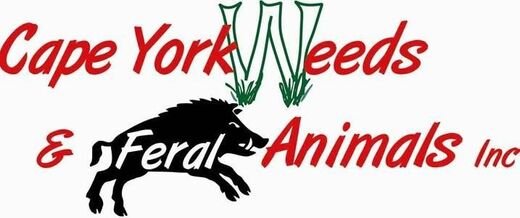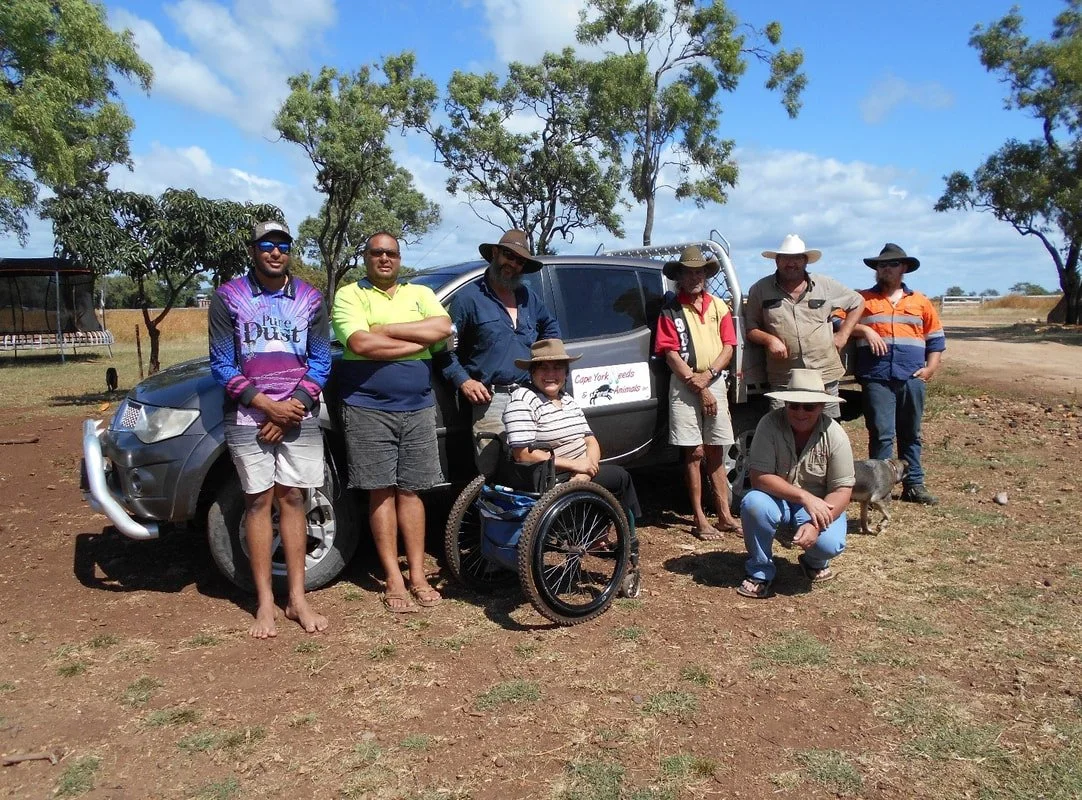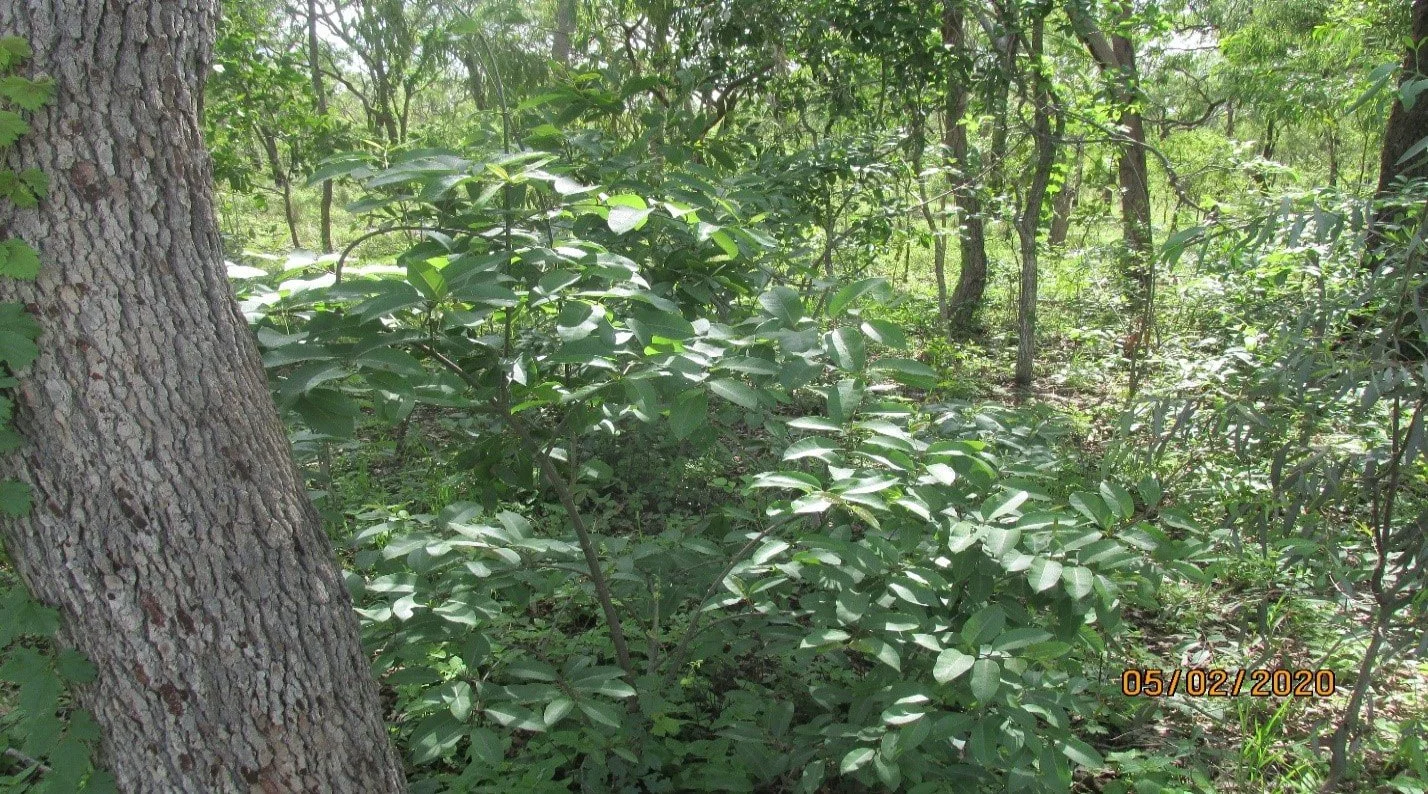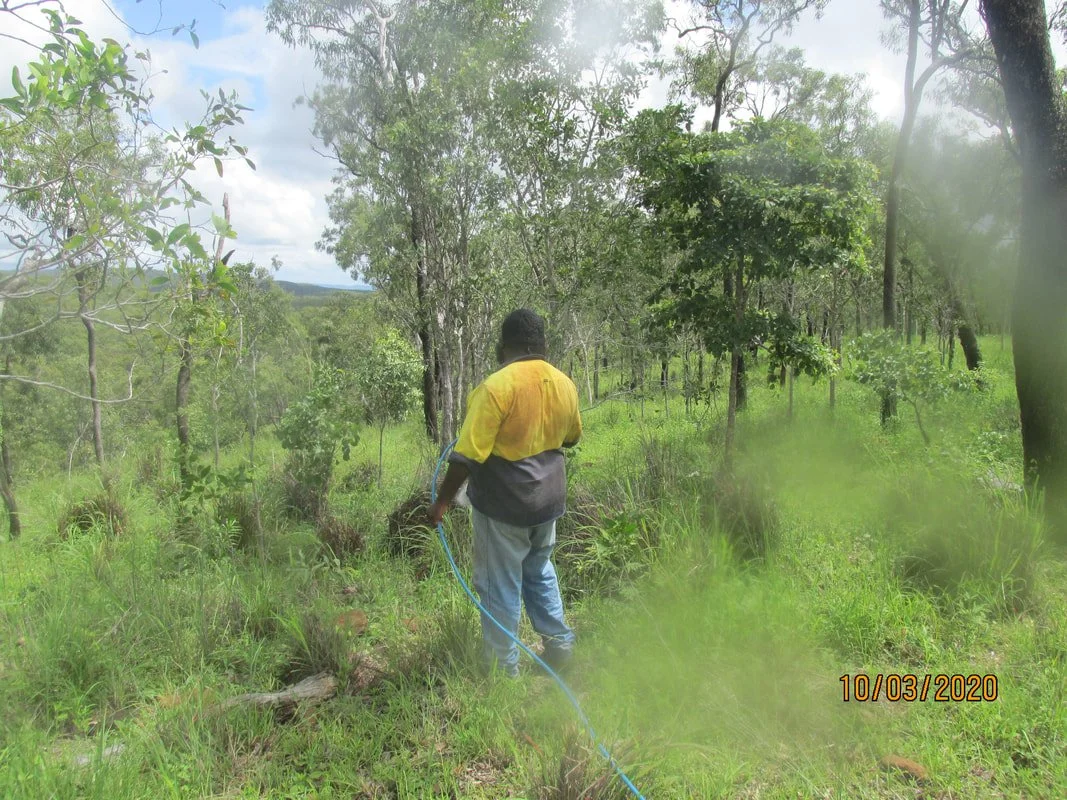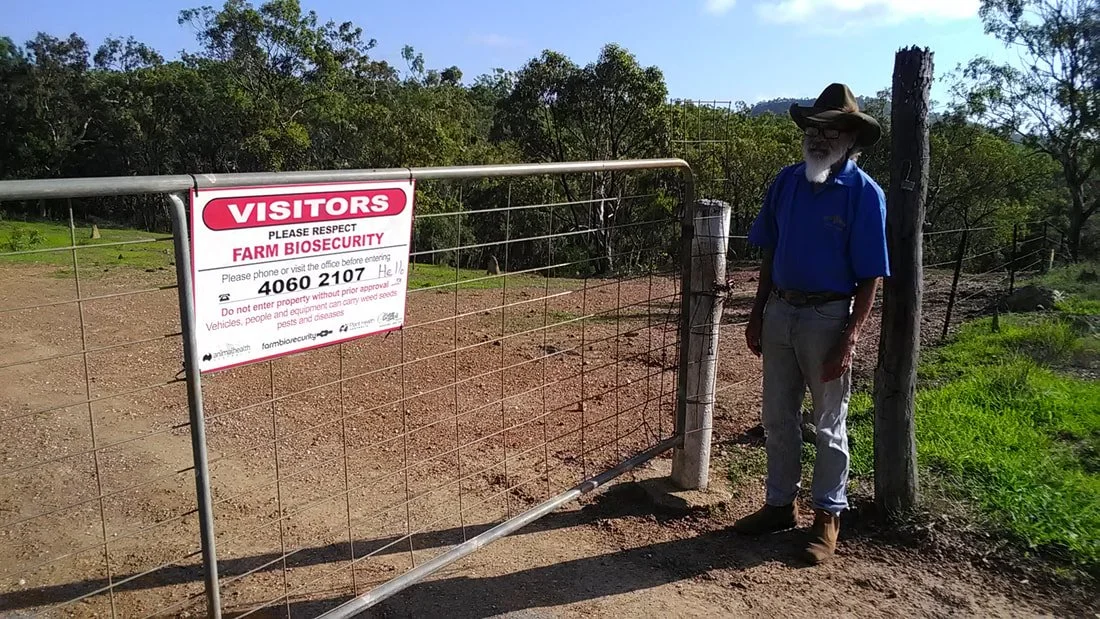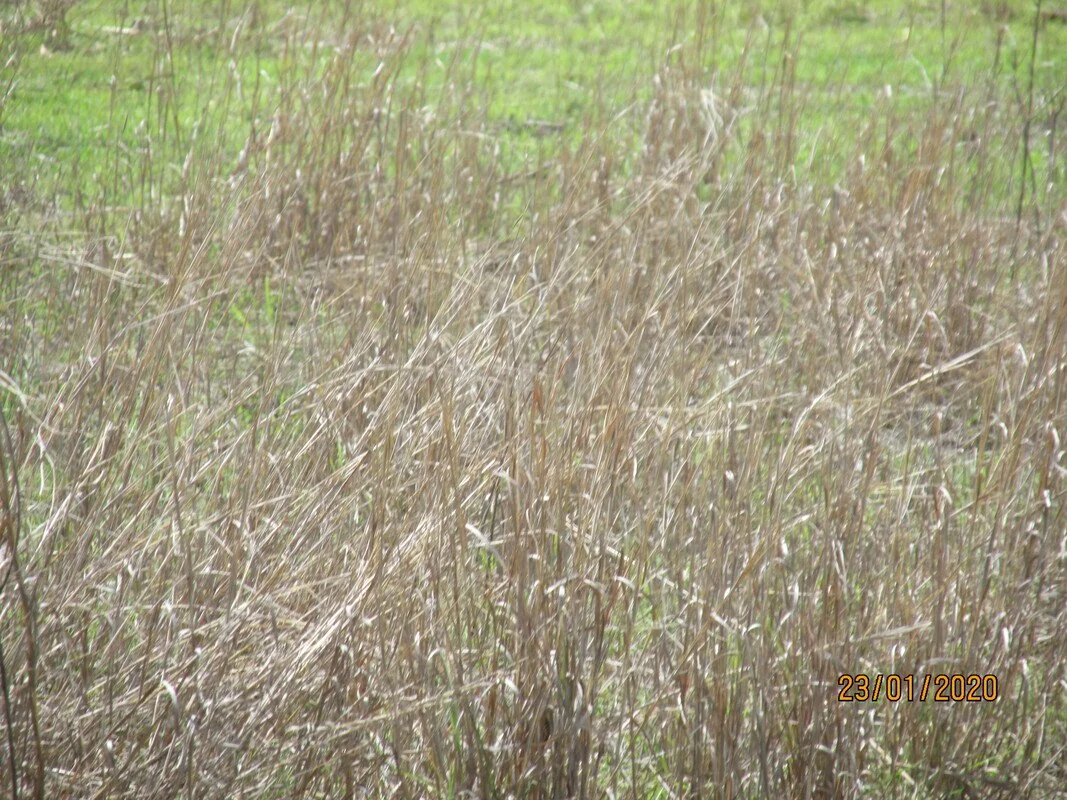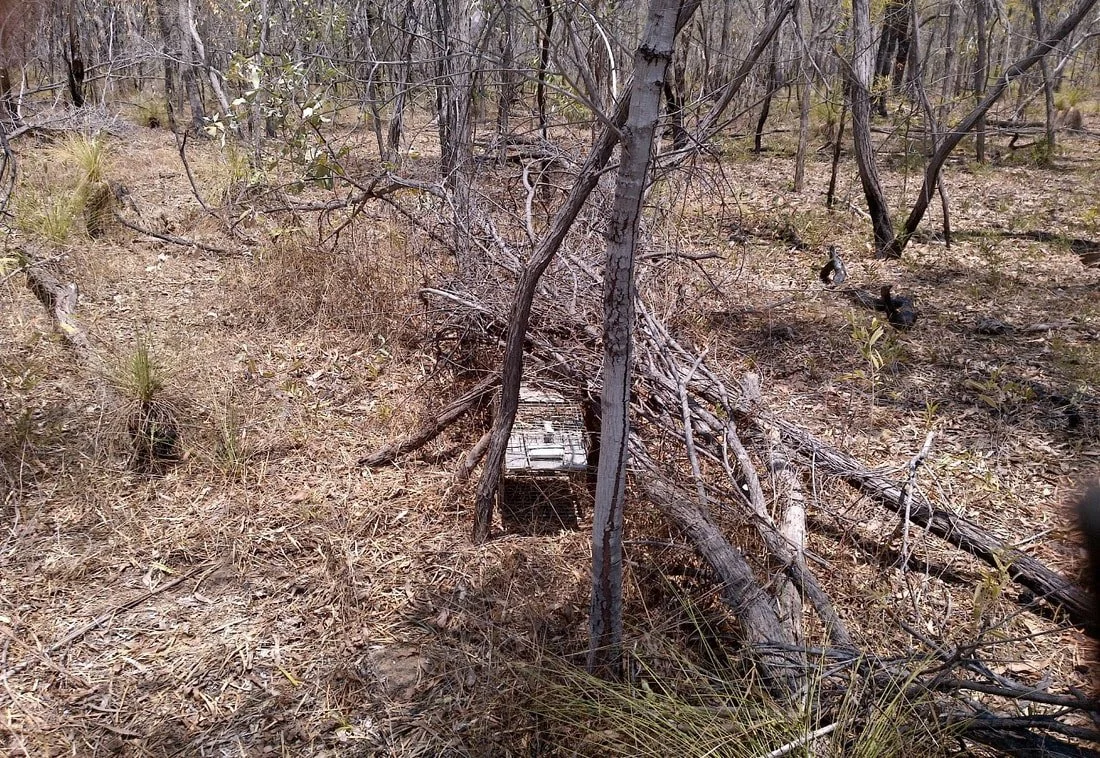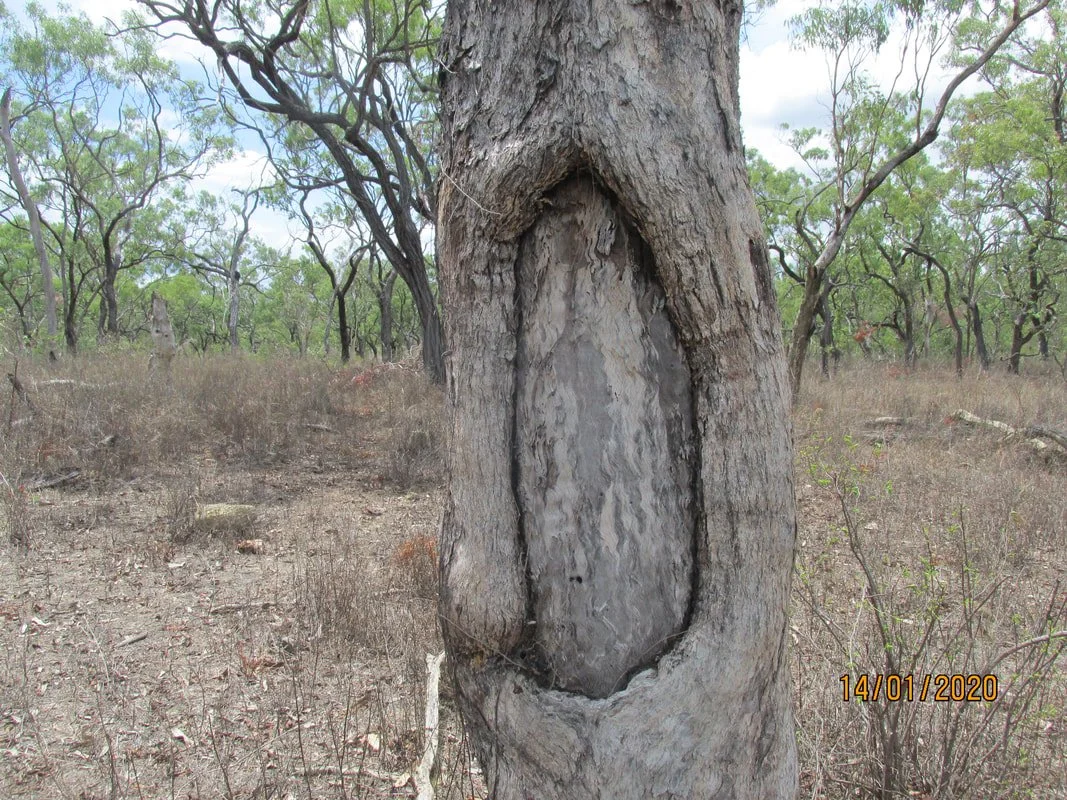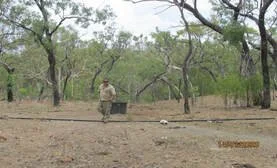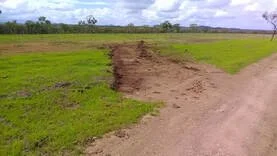Bonny Glen Land Management and Planning Final Report
In February 2019, Cape York Weeds & Feral Animals were successful in obtaining conservation funding under the Queensland Indigenous Land and Sea Program 2018.
This has been possible with the help of the Department of Environment and Science.
Cape York Weeds and Feral Animals Inc developed an extensive land management control program in conjunction with the Gummi Junga Aboriginal Corporation.
As this was a continuation of our last project, we started on milestone one of our new project.
Liaised with local landholders and neighbouring landholders around Bonny Glen.
The initial weeds and feral animal control work and follow up control was conducted in the areas that were extensively surveyed and mapped.
We also surveyed the on-ground areas to the north, south and west of each the identified weeds and feral animal infestations.
The weeds which we incorporated into the monitoring and control program were Gamba Grass, Sickle Pod, Rubber Vine, Nagoora Burr, and Sporobulus Grasses.
Our focus was on the Declared Weeds and Feral Animals under the Biosecurity Act 2014.
We have been able to time it, so we have done a control run before the plant has been able to seed and therefore reduce the seed bank in the soil.
Rubber vine, smothering access tracks and trees-before treatment.
Gamba Grass and Rubber Vine control work.
We also focused on the weeds that were affecting the cultural and natural areas along the head waters of the Palmer and Mitchell River systems.
Work on these areas has helped mitigate the effects of weeds and feral animals’ infestations on properties and communities all along the entire catchment, which runs into the Gulf of Carpentaria at Kowanyama.
As far as we can ascertain from extensive survey work that has been conducted throughout Cape York Peninsula over a 27-year period, weeds and feral animals have a huge effect on the land and water quality, which ultimately affects native ecosystem greatly, including the west coast offshore reefs.
These locations are also adjacent to the World Heritage Wet Tropics Area.
Most importantly control work will prevent these destructive weed species from establishing and building up a seed bank in these areas- if we are not too late.
The majority of weeds are very well established, being intertwined in amongst these riverine areas.
This affects all native species and the natural ecosystems that are in this catchment area.
The Gamba Grass, Sicklepod, Rubber vine and Noogoora Burr has the potential to spread further along the river and gully systems.
Vehicles, humans, and stock, travelling along these areas also have the capacity to spread it further.
This grant has enabled us to reduce the invasive weeds and the associated seed bank in these areas to enable some of the native plant and grass species to re-establish.
In conjunction with weed control and extensive program of fencing off cultural areas, quoll monitoring, 1080 baiting, feral cat control, fire management and general property maintenance was also completed.
These milestone works include, but are not limited to:
Sign up and Induction of all Traditional Owners who carried out Land Management Project.
Practical AC / DC training of all Traditional Owner workers. Most of which had been C.A.L.M. trained formally in previous grant projects.
Purchase of materials and equipment (fencing, cat traps, monitoring cameras, incendiaries and matches, safety equipment, first aid kit, satellite phone). Signage was purchase and installed.
Purchase of maintenance equipment for spray unit, and side-by-side vehicle.
Property management plan, mapping, and fire plan have all been reviewed and completed.
Weed control work, has been completed on high priority areas (eg Gamba Grass, Rubber Vine, Sicklepod, Rubber Bush, Grader Grass).
Earlier in the month of February, we were also hit hard by the death of one of the Bonny Glen managers.
A fair bit has been achieved, in a small window of time, before we were stopped from working further by the COVID-19 lockdown. We were not able to move throughout communities as a result.
The rest will be completed as soon as we can access all control areas when it dries out and we are allowed to come out of COVID-19 lockdown.
Cultural site fencing has been finished.
Culturally appropriate signage was sourced and installed as soon as we could.
Quoll monitoring was continued, with none being trapped this season. We do have evidence of their presence via droppings and tracks all around the sites where the traps were set.
Feral pigs, brumbies, wild dogs, and wildcat control has been carried out at the end of the dry season. Further control work will be done as soon as it dries out enough to enable access.
We are hopeful of getting a ruling from CASA as to whether we can start.
Areas of soil erosion noted and methods to improve stability and ground cover identified and worked on.
The purchase of the backhoe through the DES, mining rehabilitation grant has enabled us to do quite a fair bit of erosion control in some of the worse areas.
By spraying the weed infested areas, the native ground cover has also re-established very well.
Aerial burning has been carried out. One season has been completed with the final burn to be completed once the fuel load cures enough.
Relationships with key parties (eg neighbouring pastoral leases, mining leases) focused on land management have been further developed. It has been phenomenally successful in sponsoring good will and co-operation in all Land Management operations.
Traditional knowledge has been recorded and incorporated in land management plans and activities.
Maintenance of these sites was severely limited due to the COVID-19 lockdown. We have not been able to move at all. Protection fencing is still standing but needs to be tidied up in a couple of spots.
Project has been promoted and published in the Cape York NRM (CYNRM) and CYWAFA_INC's Website, Facebook and Twitter.
Cape York Weeds and Feral Animals Inc have provided on the ground and in-kind training for weeds and feral animal control. Mentoring, administration, equipment purchase, wages payments, program hosting and general program support.
The Department of Environment and Science, Gummi Junga and Cape York Weeds & Feral Animals Incorporated, are to be commended for their professionalism and willingness to get the job done.
Installed signage.
Quoll monitoring.
Fire management, incorporating traditional knowledge.
Traditional knowledge being recorded.
